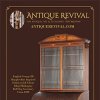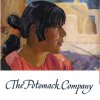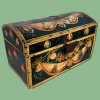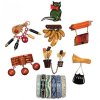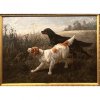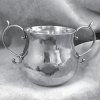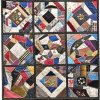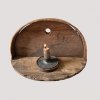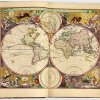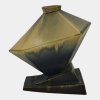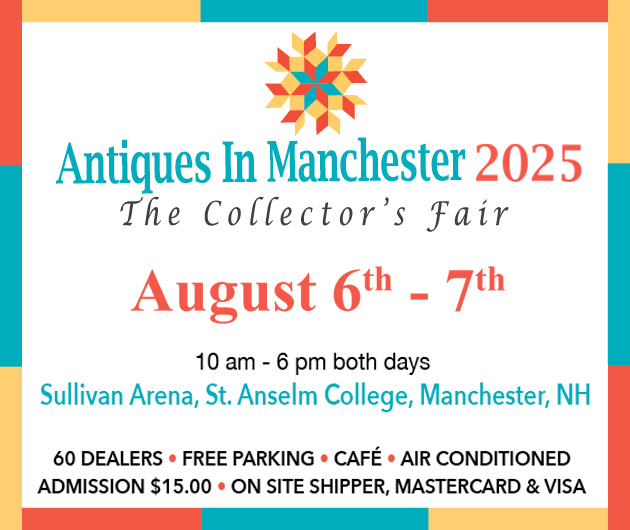Myrick Scrimshawed Tooth Brings $110,700
March 4th, 2017
Skinner, Inc., Boston, Massachusetts
Bitter cold in Boston was no deterrent to bidders at Skinner on March 4 for the Americana sale in the Boston gallery. Staff members found themselves bringing out extra seating to accommodate everyone in the gallery.
Many came to observe and participate in the sale of scrimshaw from the collection of Ernest Helides (1928-2016). A scrimshaw whale tooth from the Helides collection by Frederick Myrick (1808-1862) of Nantucket was the highlight of the auction when it brought $110,700 (including buyer’s premium) from Ipswich, Massachusetts, marine antiques dealer Andrew Jacobson in the room, buying for a client. Provenance included the collection of Jeffrey and Francine Cohen and Richard A. Bourne auctions (twice).
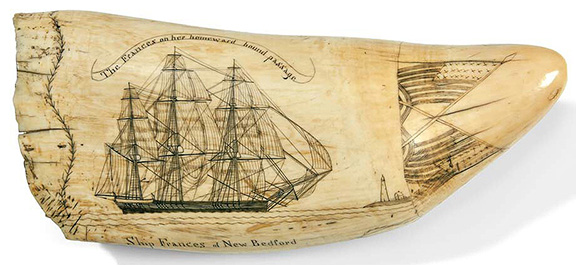
This whale tooth by Nantucket scrimshaw artist Frederick Myrick (1808-1862) was the highlight from the scrimshaw collection of Ernest Helides (1928-2016) when it brought $110,700 (est. $100,000/150,000). The 7¾" tooth, one of some 37 known examples by Myrick, is one of two known depicting the New Bedford whale ship Frances. The current example is listed as #30 F-2 in Frederick Myrick of Nantucket: Scrimshaw Catalogue Raisonné, compiled by Donald E. Ridley, P.E., edited by Stuart M. Frank, Ph.D., and published by the former Kendall Whaling Museum. Skinner photo.
The 7¾" tooth, one of some three dozen examples by Myrick known to date, is one of two known that depict the New Bedford whale ship Frances. The current example is listed as #30 F-2 in Frederick Myrick of Nantucket: Scrimshaw Catalogue Raisonné compiled by Donald E. Ridley, P.E., edited by Stuart M. Frank, Ph.D., and published by the former Kendall Whaling Museum.
Stuart Frank is the former senior curator at the New Bedford Whaling Museum, former director of the Kendall Whaling Museum, and founding director of the Scrimshaw Forgeries Laboratory. He was on hand for the sale preview, the highlight of which was his discussion of scrimshaw in general and Myrick in particular in his well-subscribed talk “The Hallowed Halls of Scrimshaw.” One couple came from Texas to hear Frank and to bid at the sale.
Myrick went to sea aboard the whale ship Susan in 1826, a voyage that lasted just shy of three years. On the homeward voyage he carved over three dozen whale teeth known to date. Most of them illustrated the Susan. Two illustrated the whaler Frances; two more illustrated the Ann of London; and at least one other depicts the Barclay of Nantucket. Each Frances tooth was engraved with a banner reading “The Frances on the coast of Peru,” and each of the two depicts the vessel with the banner “The Frances on her homeward bound passage,” a lighthouse and keeper’s house, the ship, and the couplet “Death to the living, long life to the killers, Success to the sailors’ wives & greasy luck to whalers.” While Myrick’s scrimshaw teeth are usually called Susan teeth, irrespective of the ship portrayed, their marked similarity may have given rise to the template hypothesis, observed Jacobson.
Myrick is not known to have been aboard the New Bedford whale ship Frances. Instead it is speculated that he would have encountered it off the coast of or in the ports of Peru, where both ships worked. He was the only engraver to sign and date his scrimshaw teeth. On his return to Nantucket he married and then went to live well inland in Cayuga County, New York, for the rest of his life.
Myrick engraved both sides of the whale teeth with well-executed images of the ship whaling, cutting in, or homeward bound, with spread-wing eagles, anchors, flags, and mottos. They are similar but with subtle distinctions in the arrangement of design elements. The other Frances tooth, 6½" long and identified in the catalogue raisonné as #30 F-1, sold at Skinner in 2014 for $123,000 to Jacobson in the room, buying for a different client. Most collectors, he said, are happy to have just one good tooth.
Many agreed that while the teeth in the Helides collection were remarkable, the canes and walking sticks were of a particularly fine quality. For the most part, they blew away their estimates. A case in point was a Massachusetts carved whale ivory and baleen cane with doves from about 1865 that sold on the phone for $28,290 (est. $2500/3000). The cane had come from the Barbara Johnson collection. A carved whalebone and whale ivory walking stick, 37¼" long, with a Turk’s head atop a shaft with diamond cross-hatching, rope decoration, sailor’s knots, and diamond inlay, attracted vigorous phone interest and sold for $10,455 (est. $2000/3000). The stick had sold previously at Northeast Auctions in 1999, when it was described as having been “found on Nantucket.”

This Massachusetts carved whale ivory and baleen cane from about 1865 is made with two whale ivory doves, each perched on a braided baleen sailor’s knot, a shaft of wrapped baleen, and its whale ivory knob on top in a dove form. The cane sold on the phone for $28,290 (est. $2500/3000). It came from the Barbara Johnson collection. Skinner photo.
A carved whale ivory and whalebone cane with shell inlay on the top above octagonal carving over the diamond-, beaded-, and twist-carved shaft with rectangular and diamond shell inlay, four fluted columns, and a turned whale ivory ferrule brought $9840 (est. $1500/2500) from a phone bidder, who bought several other canes and walking sticks. The same phone buyer took a whale ivory and whalebone cane, the carved knob with dramatic ebony inlay and mother-of-pearl above a shaft with diamond-shaped abalone and mother-of-pearl inlay against a whalebone and ebony background, for $8610 (est. $1500/2500). Both had been acquired at Rafael Osona Auctions in 1994.

This 30-gallon stoneware crock, circa 1880, by Williams & Couch of New Geneva, Pennsylvania, decorated with an elaborate cobalt flower and vine design, has applied lug handles and sold for $10,455 (est. $4000/6000). Skinner photo.
Online and Internet bidders delighted in Jonathan Rickard’s mocha and other wares. This selection included 27 lots from his collections with more to come. The highlight was an English mocha pearlware jug, circa 1800, that was attributed to Wood & Caldwell of Burslem in Staffordshire, a firm with an office in Boston between 1790 and 1818. The baluster-form jug with blue and orange bands with black engine-turned ovals retained a label that read, “This pitcher was …[ob]tained of D.C. Brya[nt] Portland Me (July 1900) Descendant of William Cullen Bryant. D.C. Bryant sa[id] that the pitcher came from the William Cullen Bryant household at Long Island, N.Y.” Estimated at $2000/3000, the jug brought $6150 on the phone.

The first lot of the day was from the collection of Jonathan Rickard—this English pearlware coffeepot and domed cover with a speckled green and rust veneer created from shavings from the dipped ware engine-turning process, with an overlay of black slip in an engine-turned band and rib pattern. It sold on the phone for $2583 (est. $1000/1500).
An English pearlware coffeepot and domed cover with a speckled green and rust veneer created from shavings from the dipped ware engine-turning process, with an overlay of black slip in an engine-turned band and rib pattern, sold for $2583 (est. $1000/1500). A matching cup and saucer are in the collection at the Chipstone Foundation in Milwaukee, Wisconsin. An English creamware pint mug, made probably in Staffordshire circa 1780, glazed in green with a rouletted rim above a slip-marbled ground and a white base, contained a surprise inside the mug—an attached brown creamware frog. Estimated at $1000/1500, the mug drew $1722 from an online buyer. Speaking after the sale, Americana director Steve Fletcher said that the August Americana sale will offer more than 27 additional lots from Rickard’s collection—with a presale lecture by Rickard.
 A third collection was that of Rowena Russell Potter (1880-1960) of Greenfield, Massachusetts, who bequeathed her collection as the Lucius D. Potter Memorial Collection to Historic Deerfield in memory of her husband, who descended from John (1731-1775) and Hannah Sheldon Russell (1738-1814). John Russell was a tailor in Deerfield, and the Sheldon House still stands and is open to view. Objects offered here from the Potter collection were duplicates or objects that lie outside the collecting focus of Deerfield. Proceeds from the deaccession will benefit the museum collections fund at Historic Deerfield.
A third collection was that of Rowena Russell Potter (1880-1960) of Greenfield, Massachusetts, who bequeathed her collection as the Lucius D. Potter Memorial Collection to Historic Deerfield in memory of her husband, who descended from John (1731-1775) and Hannah Sheldon Russell (1738-1814). John Russell was a tailor in Deerfield, and the Sheldon House still stands and is open to view. Objects offered here from the Potter collection were duplicates or objects that lie outside the collecting focus of Deerfield. Proceeds from the deaccession will benefit the museum collections fund at Historic Deerfield.
Rowena Potter gathered her collection over the first half of the 20th century. Some furniture showed surprising strength. She favored blockfront furniture with claw-and-ball feet.
A mahogany blockfront chest of drawers, likely made in Rhode Island, 1760-80, with a cockbeaded case, brought $5228 (est. $2000/4000) from the same on-site buyer who bought a Massachusetts blockfront chest of drawers. A Massachusetts blockfront bureau table, 1760-80, with a case of drawers with a valance drawer and a tombstone paneled door opening on a removable section and with bracket feet, sold online for $3998. Estimated at $2000/4000, it had replaced brasses and feet and had been refinished.
A Boston Chippendale mahogany blockfront slant-lid desk, 1765-85, was estimated at $6000/8000, but bidders shied away. It was not its time just yet, and the desk passed on the day, although it sold afterward for $4305. An upholstered Massachusetts mahogany easy chair, 1740-60, with a serpentine back, shaped sides, and outward scrolling arms went to a phone bidder for $3936 (est. $800/1200).
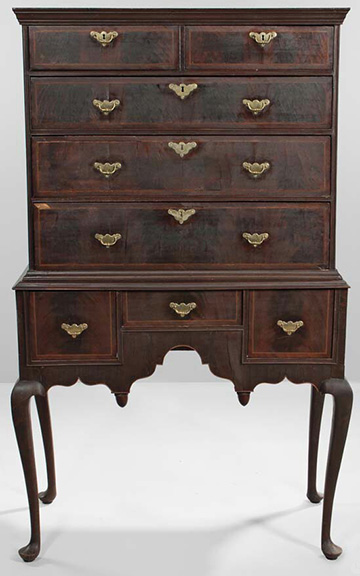
This early 18th-century maple high chest, 65½" tall, with walnut veneer and inlay was purchased in Hingham, Massachusetts, in 1935. It realized $12,300 on the phone (est. $10,000/15,000). Skinner photo.
Nantucket baskets from the Potter collection included two 20th-century examples with carved bentwood handles: one brought $1845 (est. $600/800); and a late 19th-century example by A.J. (Captain Andrew Jackson) Sandsbury that retained his label sold for $1599 (est. $400/600).
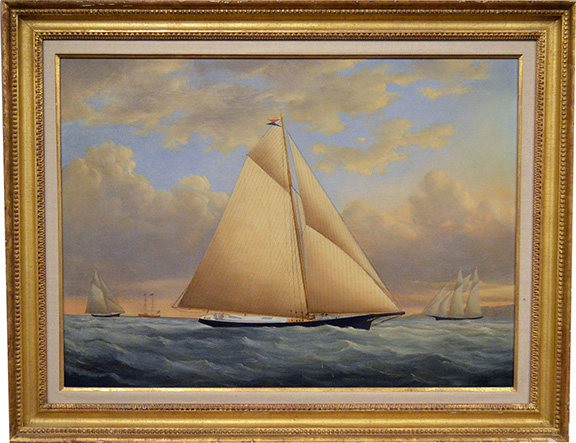
This oil on canvas portrait, 21½" x 29½", of the 78' sloop Julia under sail is unsigned and realized $6765 (est. $2000/3000). The yacht was built on Long Island, New York, by George Steers and Co. for James M. Waterbury, a founding member of the New York Yacht Club, and it won many races. The painting exhibits a similar style and form to that of paintings by James E. Buttersworth, particularly for the use of cadmium orange in the sky.
Other collections proved to be the source of some other gems. Six phone bidders chased a scrimshaw whale tooth attributed to the Banknote Engraver with a finely detailed image of the Sailor’s Farewell and with a floral border and a diamond tooth border. One of the phone bidders got it for $20,910. A pair of whale teeth with engraved and polychrome portraits of women sold well: one tooth depicts a woman feeding a lamb on one side and on its other side a woman wears a dark gown above a border of roses; the other tooth is engraved with an image of a girl skipping rope on one side and on the other side with a woman in a striped gown. The pair sold to a phone buyer for $11,070. A tooth depicting a woman at her harp, circa 1830, brought $1845.
Of a group of whale and dolphin carvings by Clark G. Voorhees Jr. (1911-1980), the highlight was a carved and painted sperm whale that brought $4305 (est. $1500/1200).
An 18th-century mahogany and cedar side chair made in Bermuda, with a scrolled crest rail, a vasiform splat, and cabriole legs on pad feet, was estimated at $700/900 and realized $3075.
A late 19th-century cast-iron still bank, 7" tall, in the form of the Massachusetts State House by maker Smith & Egge Mfg. in Bridgeport, Connecticut, with a gilt-colored dome and windows, a red roof, and a green exterior, sold for $6765 (est. $1000/1500).
For more information, visit the website (www.skinnerinc.com) or call the Americana department at (508) 970-3200.

The pair of oils on canvas, each 46" x 29", portraits of Theodore and Ann Eliza Collins by Susan C. Waters (1823-1900), brought $14,760 (est. $8000/12,000). Waters painted the children in 1845 when Ann Eliza, who holds a bunch of grapes and wears a red print dress and red shoes, was two years old and her brother Theodore, who holds an apple and wears a black printed coat, blue trousers, and a yellow shirt, was four years old. Where they lived is unknown.
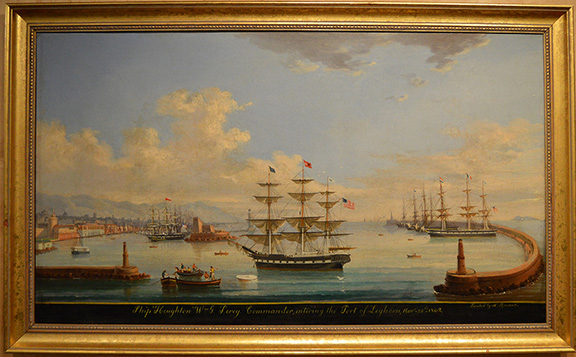
The marine painting with the inscription “Ship Houghton Wm. G. Percy Commander, entering the Port of Leghorn, November 24th, 1862” is signed “Painted by M. Renault.” The 20" x 34½" oil on canvas depicts the ship built and owned by Levi Houghton & Sons in 1849 in Bath, Maine. The painting sold for $22,140 (est. $8000/12,000). Michele Renault (Italian, active 1840-68) made ships’ portraits in the Italian port of Livorno.
Originally published in the May 2017 issue of Maine Antique Digest. © 2017 Maine Antique Digest




